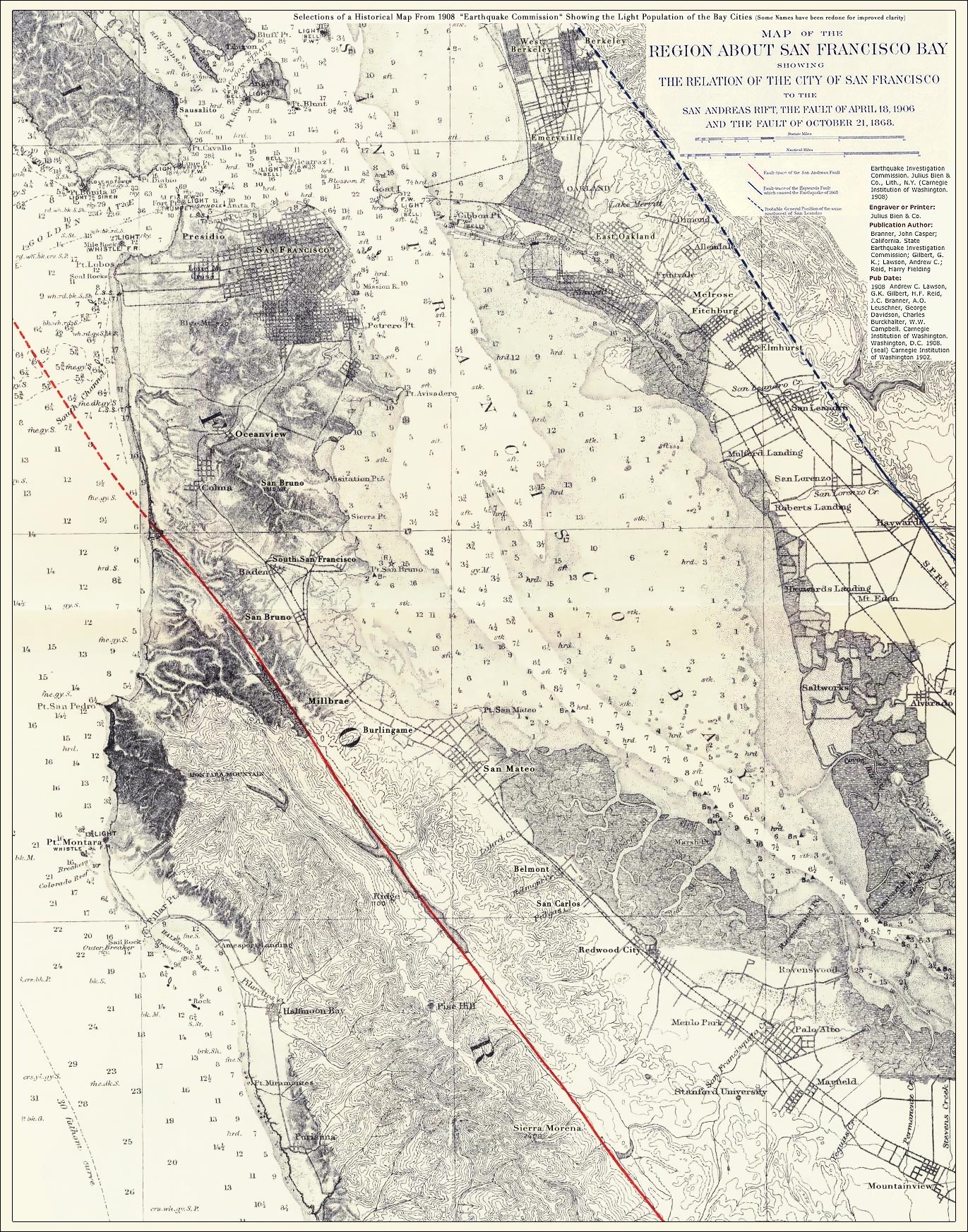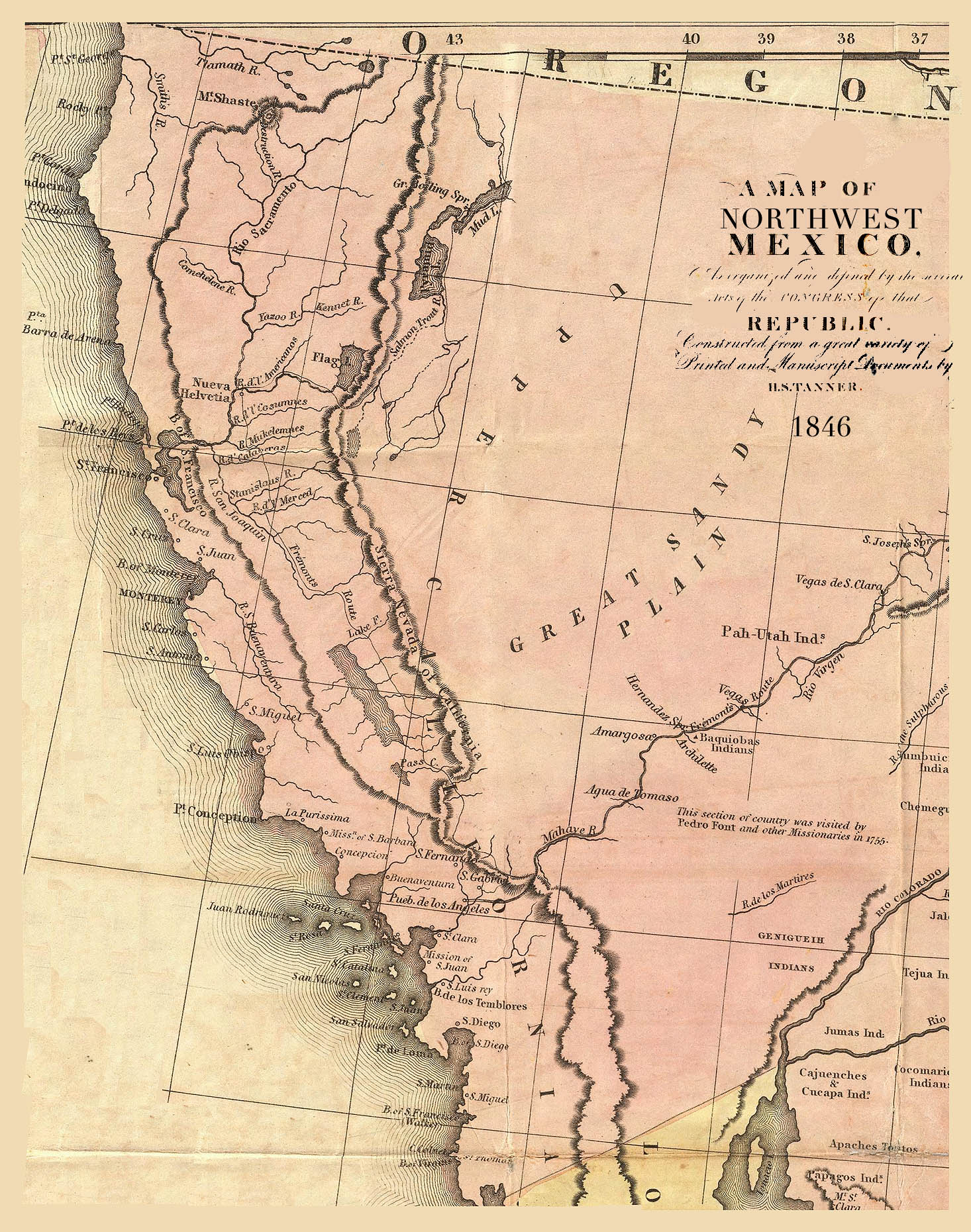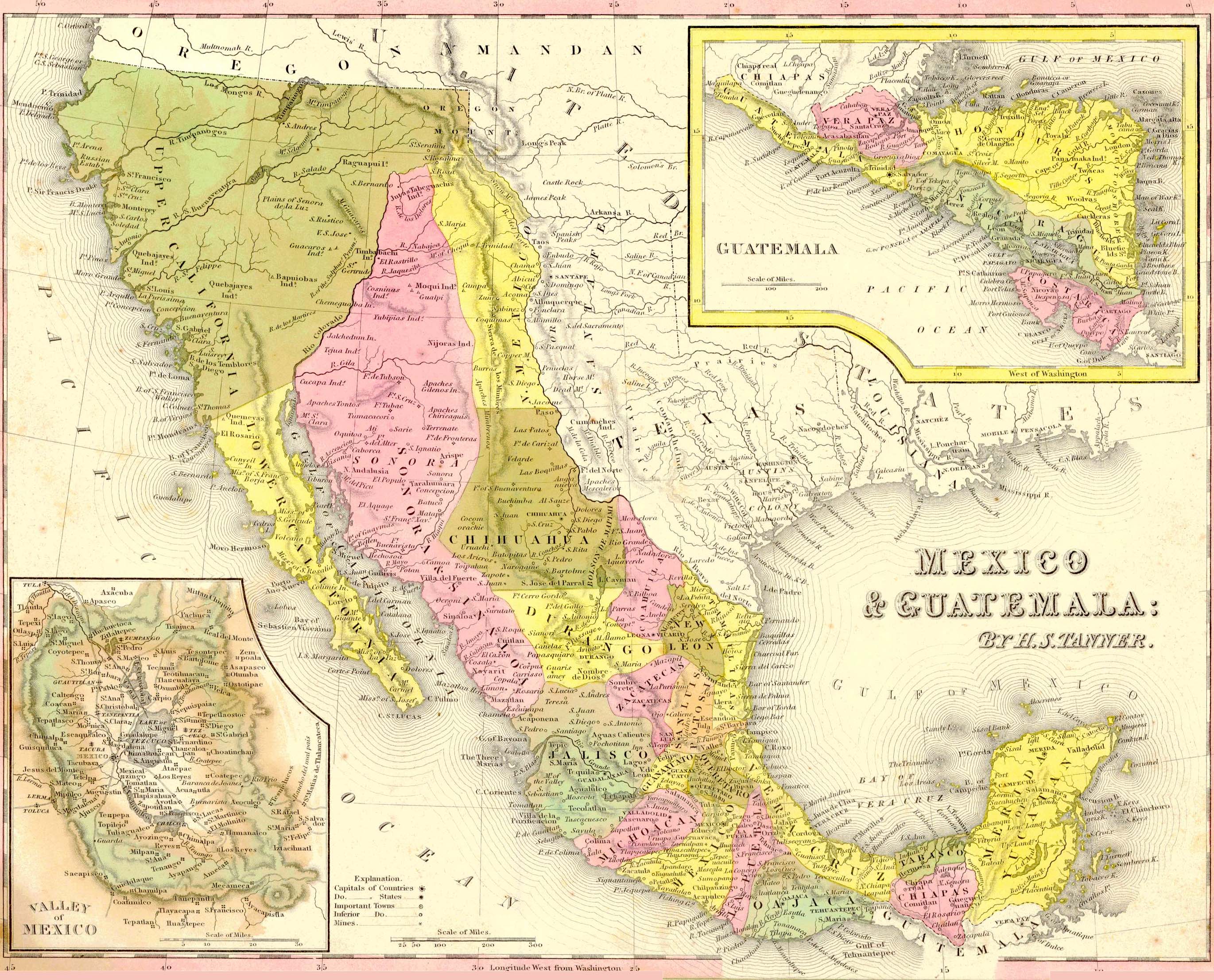.




1519-1521
|
Hernan Cortez and his Spanish conquistadors overthrew the Aztec Empire and killed its last Emperor, Cuaht╚moc. |
1523-1821
|
Viceroys ruled "New Spain"which claimed its northeast boundary near what today is Charleston, SC and its northwestern outposts at San Francisco. CA and Taos, NM. |
1540
|
Expansion northward: Soto in present southeast United States; Coronado in southwest; Cabrillo in California. |
1571
|
"Spanish Galleon" began run between Acapulco and Manila. |
1763
|
New Spain lost Florida to Great Britain but gained Louisiana from France. |
1767
|
Expulsion of Jesuits. |
1780
|
Governor Bernardo de Galvez from New Orleans fought British and regained the Floridas during the American War of Independence. |
1789
|
French Revolution: its doctrines spread to Latin America, where Creoles wanted to supplant Gachupines (Peninsular-born whites) in office. |
1803
|
Napoleon took Louisiana back from New Spain but sold it to the United States. |
1808
|
Napoleon deposed Spanish king and replaced him with his brother, Joseph, precipitating revolution and the Peninsular War and, ultimately, his own downfall. |
Sep
16, 1810 |
Father Manuel Hidalgo called for Mexican independence from Spain in "el gr╠to de Delores" and this became Mexico's Independence Day. However, the struggle denigrated into guerilla warfare as the masses -- Mestizos and Indians -- rose against whites -- Gachupines and Creoles. |
Feb
24, 1821 |
General August╠n de Iturbide signed the Plan of Iguala to establish the new nation: conservative rule to protect upper orders against the masses. In July, the last Viceroy, Juan O'DonojÖ, recognized Mexican independence in the Treaty of C█rdoba. Iturbide proclaimed himself Emperor Iturbide I. In the same year, Austins began American settlement of Texas. |
1823
|
General Santa Anna deposed Iturbide and declared a Republic. Bitter struggle began between centrists (conservatives) and federalists (liberals), continuing to 1860. |
1824-1834
|
First federalist regime. Centrists allied with Scottish Rite Masons (Escoces) and federalists with York Rite Masons (Yorkinos). |
1834-1846
|
Santa Anna turned his coat and led Centrists to power. |
Mar
1, 1836 |
Because of Santa Anna's centrization, Texas declared its independence and won it at the Battle of San Jacinto. |
Dec
29, 1845 |
The United States annexed the Republic of Texas. President James K. Polk sent John Slidell to Mexico to settle differences but war party in Mexico under Paredes won out. |
1846-1848
|
US-Mexican War. Four campaigns -- Taylor in Northern Mexico, Kearny in New Mexico, naval blockage of both coasts and Scott's campaign from Vera Cruz to Mexico City. |
Oct
13, 1847 |
Aztec Club of 1847 organized in Mexico City with General John A. Quitman, of Mississippi, as its first President. |
Feb
2, 1848 |
Treaty of Guadalupe Hidalgo ends the War. Terms of peace included payment by the United States of $15 million for Mexico Cession. |
1857
|
A new constitution and a liberal victory, but three years of civil war followed until Benito Juarez emerged as liberal leader and President. |
1861
|
European intervention during the American Civil War by Great Britain, Spain and France. First two withdrew shortly thereafter. |
1863
|
French army captured Mexico City and Archduke Maximilian of Austria-Hungary, a Hapsburg, proclaimed second Emperor of Mexico. |
1865-1867
|
The Civil War ended, the United States sent troops to the border, the French withdrew and Maximilian is executed at Quer╚taro. Empress Carlotta went mad. |
1867-1872
|
Juarez is again President of Mexico; died in office. |
1877-1911
|
Porfirio Diaz dictator of Mexico for all but four years. Encouraged foreign exploitation of Mexico's natural wealth, but Mexico City becomes a metropolis. |
1910-1920
|
Mexican Revolution -- Madero, Huerta, Carranza, Villa and Zapata. |
1914
|
United States seized Vera Cruz in dispute with conservative dictator Huerta. |
1916
|
Villa's raid on Columbus, NM was followed by Pershing's punitive expedition into Northern Mexico with 12,000 troops. The U. S. National Guard is sent to the Mexican border. |
1917
|
U. S. withdrew on eve of its entry into World War I. New Mexican constitution adopted. |
1920
|
Obreg█n overthrew and killed Carranza. |
1920-1934
|
Revolutionary reorganization. Calles President in 1924, suppressed Roman Catholic Church and nationalized oil. Obreg█n, again elected President in 1928, was assassinated and Calles took over once more. |
1934
|
Lazaro Cardenas (father of Mexico City's new mayor, Cuahtem█c) elected President and revived social revolution, organized labor, instituted land reform and expropriated foreign-owned property. |
1941-1945
|
World War II. After Pearl Harbor, Mexico, under President Avila Camacho, declared war on the Axis. U. S.-Mexican friendship cemented. Mexican Air Force Squadron 201, flying P-47s, fought Japanese in the Philippines, serving with the U. S. Far East Air Corps. |
1946
|
Miguel AlemĚn elected first civilian President since Madero in 1911. |